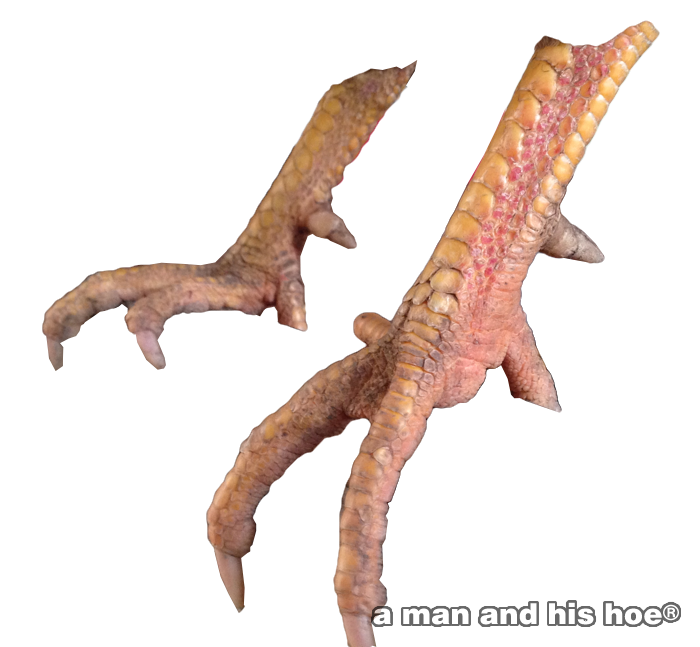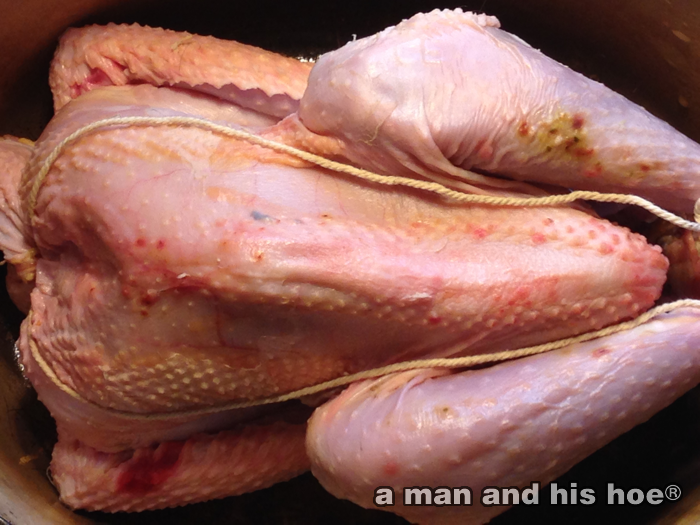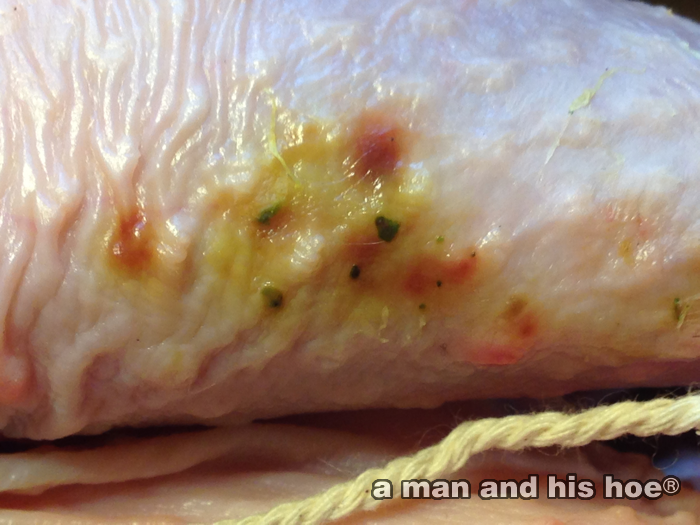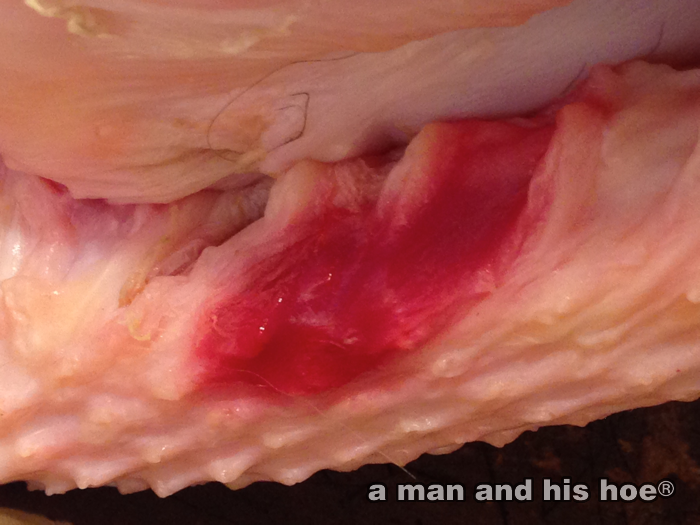Your cart is currently empty!
Battle Scarred
There is no denying that violence is an integral part of chicken society. Battles erupt between chickens primarily over space. Hens will make a fuss if another hen is using the nest she wants to use. Roosters will fight over hens and territory. In a way, they fight over the same things people do. Giving chickens plenty of space, keeps these turf battles to a minimum.

Their feet, claws, and spurs are a rooster’s primary weapons. They also use their beaks and wings when they fight. And when I need to remove an especially aggressive rooster, I can see his battle scars clearly on his skin.



I wonder if we don’t make a mistake when we underestimate the genetic underpinnings of human behavior. You can see the impulse of males in many animal species to battle over females and territory. What we humans do, looks a lot like what roosters and hens do, only on a grand scale. We may think instinct has no bearing on what we do, but maybe we are more driven by instinct than we think.
Comments
15 responses to “Battle Scarred”
-
Oh, I think you’re right about the role of instinct in human behavior. It’s discouraging, in a way, but perhaps in the long run we could learn to manage our own instincts too. Overpopulation would be one thing to tackle in our species, too.
I usually save your posts for breakfast because the photographs are so beautiful, but today I couldn’t resist looking at the last two when I saw them at lunchtime. Can I reveal my ignorance by asking what types of chickens you keep? And how much they are able to forage for themselves (you mention feed in the previous post)? They look so independent!
-
I have a variety of chickens: Americauna, Brown Cornish, Bresse (black and white), Buff Orpington, Dominique, Dorking, Golden Buff, Rhode Island, Swedish Flower Chicken, Turken, Wheaten Maran, Wyandotte, and mixes of the above. The organic feed I give them supplies about a quarter to a third of their food. The rest they get on their own. They forage so much, I could probably get by without giving them any feed. But providing them with some feed in the morning and afternoon in the coop, gives them a good incentive to stick around.
-
If you pick up food waste from any local restaurants– maybe the cafe that sells your eggs– you shouldn’t have to supply any feed at all. We collect food waste from local farmers markets and several local restaurants; it keeps food waste from going to the landfill, and gives the chickens more variety. We just throw it in the compost, and let the chickens eat it or ignore it as they see fit.
-
That is a good idea. I used to pick up left over produce from a co-op about 15 miles away but stopped after a year when I couldn’t count on reliably picking it up. They had me scheduled to pickup every Wednesday, and they would set the bag or bags of left our produce outside their delivery door for me to pickup. But frequently, others would nab it before I could get it! And now, I have so much compost material out of my own beds, that it doesn’t make sense to go 15 miles to get more. But getting the left over from the cafe that buys my eggs is a good idea. They just opened a taqueria next to the cafe so they may have plenty of discarded food for the chickens.
-
What a lovely sounding group. Swedish Flower chickens were new to me; I enjoyed reading about them.
-
This is my new favorite site. I finally got around to reading The Book of Tofu that I bought 15 years ago, was looking for a source of nigari to make tofu, and found your tofu post. Wonderful! I wasn’t too keen on buying nigari made from Japanese ocean water since the melt-down. Then stumbled upon your chicken book—Ooooooo–every chicken DOES need a mother. I had watched some escaped chickens in the woods down the street from me–omg–I saw how happy and bird-like they were. I even steered people wrong when they were looking for them. I want chickens, but I don’t eat meat, so no butchering. After doing 5 years worth of research for a book I wrote, I can give you an alternative explanation for the aggressive roosters: manmade estrogens such as nonylphenol which is put in pesticides (and not listed on the label because it’s an “inert” ingdt). Estrogen makes males aggressive. See, e.g., http://www.ucsf.edu/news/2009/10/4306/estrogen-link-male-aggression-sheds-new-light-sex-specific-behaviors. If I had to guess, I’d say the corn you’re buying, even though it’s organic, may have nonylphenol or related chemical estrogens in it. I say this because pesticides can drift hundreds of miles from where they’re sprayed on a calm day. Obviously, chemical estrogens could also explain increasing violence and aggression in American males.
Beautiful blog you have and I’m going to get the chicken book soon.
-
Glad you like the post. The San Juan Island Sea Salt nigari is the best nigari I’ve found. Regarding the aggressiveness in roosters, chemical residue is a possibility, though roosters have been known for their aggression before synthetic chemicals were around. The organic feed I buy doesn’t have corn, though it does have wheat, barley, and oats. I did read in Temple Grandin’s book, Animals Make Us Human, that chicken breeders may have inadvertently created more aggressive roosters. In her example, she was seeing roosters that don’t even try and court the hens. Mine certainly do. When they try to woo a hen, they do this funny dance around the hen. It’s a simple dance. They lower one wing and circle her. Sometimes she is impressed. Often she is not. The other way the roosters try and woo the hens is by finding good things for them to eat.
My speculation on aggression in roosters is that since evolution is based on what reproduces, roosters that are more aggressive and mate with more hens, are more inclined to have offspring. As a result, there is a bias for the genes of the more aggressive ones to populate. This probably applies in most species, even humans, which is why there is an inclination for males in many species to be aggressive.
-
If it were true that passive males were evolutionary superior, then they would have killed each other off a long time ago as each generation got more aggressive. At some point aggression becomes maladaptive. There is no gene for aggression. Aggression is biochemical. It’s activated and deactivated by biochemistry. The publication I pointed out is only one of about a dozen that have been published since the early 1990s on estrogen and aggression in males. Testosterone has the opposite effect on males–contrary to popular opinion. Unfortunately, humans have saturated the environment in very potent chemical estrogens in the form of the BPAs in polycarbonate plastic, nonylphenol in pesticides and thousands of other “consumer” products that no one can avoid. These manmade estrogens adversely affect the normal balance of hormones in animals. Social conditions also impact biochemistry, including hormonal biochemistry. Also, there are degrees of aggression–adaptive to maladaptive. There’s aggression as in I’m going to confront my neighbor about cutting down the tree on my property versus the aggression as in I’m going to go postal. Adaptive aggression enhances survival; but maladaptive aggression decreases it. So I’m thinking okay you know the roosters will fight over females, but I think you wouldn’t bring up the subject complete with photos if you weren’t getting the uncomfortable feeling (perhaps subconsciously) that, hey, this is over the top. What I’m saying is, I can give you an explanation for what you’re seeing–manmade estrogens. Also, I just want to say that a lot of people don’t realize that “organic” is less contaminated, not uncontaminated. Pesticide rains down in rain drops in our National Forests and every other “pristine” area. Manmade chemicals have polluted the entire planet and everything on it–wheat, barley, and everything else.
Your observations are very interesting and enjoyable to read. The males bring them something good to eat–isn’t that nice–not flowers but earthworms.
-
Another interesting aspect about roosters, is that some of them get upset if a hen refuses their advances. They will deliberately go after the hens that ignore them until they finally give in. It’s like sex is a power trip for them. It’s as if they are offended or get angry when a hen won’t put-out, so to speak. I’m sure we’ve all met men like that. It’s odd that you see parallel personality types between chickens and people. The nice ones. The assholes.
Other roosters, if a hen ignores them, don’t get bothered and stick to the hens that do like them. There are so many personalities among the roosters and hens. Their social interaction can be complex. At times it is like watching a soap opera. Who is with whom this week? Who is keeping score? Who is holding a grudge?
Several years ago, I did have one rooster that pounced on a hen so hard, that she ended up dying. That rooster was in the refrigerator within a hour of that happening. There do seem to be different levels of aggression depending on the breed. The kindest rooster, and one many hens love, is Billy, the oldest rooster here. He is such a sweetheart. He will be missed when his time finally comes.
-
Chicken rape??! Who would have known–
You got me so interested, I checked into the latest on aggression. They have found genes that control aspects of natural chemicals in the brain that control aggression and stress. Those genes can be adversely affected during fetal development so as to make the offspring more aggressive and less able to cope with stress. It’s not the genes themselves that are affected–it’s how they function.It’s similar to agouti mice–their coat color when they’re born correlates with the degree of metabolic dysfunction they will eventually get as adults. The color predicts whether or not they will get diabetes. They all have the exact same genes–what’s different is the amount of methylation-enhancing nutrition (choline, vitamin B12, etc.) the mother mouse got while pregnant. There’s a graduating scale from black to mottled with yellow to full yellow, depending on the mother’s diet. The ones that get the least methylation-enhancing factors such as choline and B12 will have a yellow coat, be fat and get diabetes. The ones from mothers that got a higher amount of the nutrients are mottled yellow and black and they will get somewhat obese and get some metabolic problems. The ones whose mothers get high amounts of methylation-enhancing factors will be black and no metabolic abnormalities. Methylation impacts how genes function, not the genes themselves. The offspring are “imprinted” for life with the mother’s diet’s effect on her offspring’s genes. Not only a lack of nutrients can impact how genes function, manmade chemicals do to. Environmental chemicals, including pesticides, can interfere with methylation (a biochemical process) and negatively impact the methylation of the genes, causing them to malfunction. Genes are normally activated and deactivated constantly in accordance with the time of day, eating, etc. Chemicals can interfere with biochemistry and cause genes to malfunction even in adults. For example, tumor suppressor genes in cancer patients are shut off. The genes are there–they’re just not functioning.
It’s possible that the mothers of some of the chicken rapists, or the rapists themselves, may have encountered a parts per trillion increase in some chemical during development that altered their brain biochemistry–either through altering gene function or directly. It might be a really interesting experiment to see if you could alter their behavior by giving them extra whatever. I’ve been able to turn aggressive dogs and cats that were going to be killed into nonagressive animals by changing their diet and giving them supplements. Your guys are already getting a high quality diet, obviously, so you’d have to really play around with what might alter their behavior.
Amazing that you could pick out Billy from the crowd at an early age–how do you tell them apart? He’s quite a fine chicken.
-
It was easy to pick out Billy as a chick because he was the only rooster among the six Buff Orpington chicks we purchased back in April 2009. By the time they are a month old, even earlier, it is clear which ones are roosters and which ones are hens. As adults, chickens have faces and features that are as different as those of people. Each chicken’s comb is different, their beaks are different, their feather patterns are different, their mannerisms are different, their voices are different, their feet are different.
-
Amazing. Really wonderful. And this little one getting a ride on his mother’s back–so cute. Hey, do Billy and the gang know that May 4th is Intl Respect for Chickens Day? https://www.jenis.com/customer-service/shipping-info/#shipping-schedule
Question: do you take the photos? If so, what kind of camera do you use? You seem to be able to get really good shots without distortion when they’re put into banner size. (I take food photos for our business).
-
I take the photos and videos using my iPhone. I should get a camera with a zoom, because when I get too close to the chickens, they react and I need to be able to take closeups from 10 to 15 feet away. But with there being so many thousands of varieties of cameras, I can’t make up my mind as to which one would work best. Something small with a great zoom lens.
Chicks often hop on their mother’s backs.
-
Good cameras are not expensive these days, and, hey, if you do this well with a phone, I hate to see what you’ll do with a real camera. Didn’t know that chicks got free rides like that. So cute.
Hey I have a question: how do you get your photos to be radical rectangles like the one at the top without distortion? I take food photos for our website and I’ve been using Gimp, but I have so much trouble with distortion when I try to squeeze the photo into such a rectangle.
-
To get the rectangles, I use the “crop” tool to select the portion of the photo I want to use. I’m basically cutting away the parts of the photo that don’t fit into the square. I was using Photoshop, but now I am using Pixelmator to edit the photos. If you do a search for “cropping images in Gimp” you will find many examples of how to do it. When you crop the photo, you aren’t changing the aspect of the photo so there is no distortion. If you know from the start that you need a square photo, you might check if your camera has an option to take square photos. That’s an option I have, though I rarely use it, on the iPhone, and it is an option on many digital cameras.
Leave a Reply
You must be logged in to post a comment.